Plenary Speakers 

|
MICHAEL BENEDIKT
CERN
Michael Benedikt is an accelerator physicist who started his career with a PhD on medical accelerator design, as a member of the CERN Proton-Ion Medical Machine Study group. After having obtained his degree from Vienna University of Technology, he joined CERN’s accelerator operation group in 1997, where he headed different sections before taking on the deputy group leader position in 2006 that he held until end 2013. In parallel to his operation related activities, Michael Benedikt was leading the PS2 design study from 2005 to 2008 to design a new high-performance synchrotron as potential replacement of the aging CERN Proton Synchrotron. From 2008 until 2013, he was project leader for the design and construction of the accelerator complex for the Austrian hadron therapy centre MedAustron in Wiener Neustadt. In autumn 2013, Michael Benedikt was appointed study leader for the Future Circular Collider Study at CERN with the mandate to develop conceptual designs for future energy-frontier circular colliders for the for the post-LHC era. Aside of his activities at CERN, Michael Benedikt is teaching accelerator physics at the Vienna University of Technology.
|
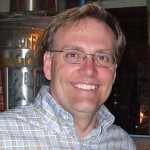
|
SAM BENZ
National Institute of Standards and Technology (NIST)
Sam Benz leads the Superconductive Electronics Group of NIST that develops state-of-the-art quantum voltage standard systems, technology, and measurement techniques for AC and DC voltage and primary electronic thermometry, which NIST provides to U.S. Industry and national and international measurement laboratories. The group also has research programs in superconducting high-speed computing and rf communications.
Benz was born in Dubuque, IA, on December 4, 1962. He received the B.A. degree (summa cum laude) in physics and math from Luther College, Decorah, IA, in 1985 and the Ph.D. degree in physics from Harvard University, Cambridge, MA, in 1990.
In 1990, he joined the National Institute of Standards and Technology (NIST), Boulder, CO, as a NIST/NRC Postdoctoral Fellow and became a permanent Staff Member in January 1992. He has been the Project Leader of the Quantum Voltage Project at NIST since October 1999. He has worked on a broad range of topics within the field of superconducting electronics, including Josephson junction array oscillators, single flux quantum logic, ac and dc Josephson voltage standards, Josephson waveform synthesis, and noise thermometry. He has over 220 publications and is the holder of three patents in the field of superconducting electronics.
Benz is a Fellow of NIST, the American Physical Society (APS) and the Institute of Electrical and Electronics Engineers (IEEE). He is a member of Phi Beta Kappa and Sigma Pi Sigma. He has received three U.S. Department of Commerce Gold Medals for Distinguished Achievement and the 2006 IEEE Council on Superconductivity Van Duzer Prize, and the 2016 IEEE Joseph F. Keithley Award in Instrumentation and Measurement.
|
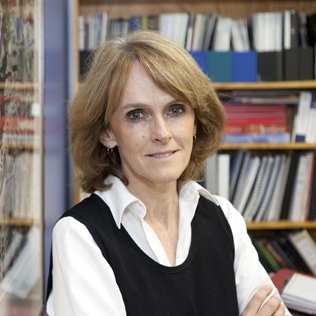 |
CATHERINE FOLEY
CSIRODr Cathy Foley, Deputy and Science Director of CSIRO Manufacturing, has made distinguished contributions to the understanding of superconducting materials and to the development of devices using superconductors to detect magnetic fields and locate valuable deposits of minerals. Cathy is also the Chair of the Australian National Fabrication Facility Victorian Node Collaboration Committee and the ARC Steel Hub Advisory Committee as well as sitting on several other committees and boards. Dr Foley has made significant contributions to the scientific community as president of several scientific societies and as a member of committees such as PMSEIC giving advice to Government on scientific and technological matters. Cathy was awarded the `Woman of the Year’ by the NSW Government in 2013 and the International IEEE Award for Continuing and Significant Contributions to Applied Superconductivity 2014. In 2015 was awarded the Clunies Ross Medal of the Australian Academy of Technological Science and Engineering and Australian Institute of Physics’ Outstanding Service to Physics Award. As a leader in CSIRO Manufacturing, Cathy is working to help existing Australian manufacturers to transform to be globally competitive by engaging with Australian researchers and to build new companies to assist with the translation of research for economic prosperity.
|
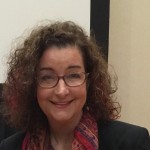 |
LAURA GREENE
NHMFL/FSU
Laura H. Greene is the Chief Scientist at the National High Field Magnet Laboratory and the Francis Eppes Professor of Physics at Florida State University. Her research is in experimental condensed matter physicist, investigating strongly correlated electron systems and focusing primarily on revealing the mechanisms of unconventional superconductivity by planar-tunneling and point-contact electron spectroscopies. Her research also involves growing and developing methods for predictive design of new supercondcutors. She is recognized for her work on superconductor/semiconductor proximity effects, elucidating the physical properties of the pure and doped high-temperature superconductors (HTS), the discovery of broken time-reversal symmetry in HTS, and spectroscopic studies of the electronic structure in heavy-fermion metals. She is the President-Elect of the American Physical Society (APS) where she has served as Chair of the Division of Materials Physics and co-founded their Forum on Outreach and Engaging the Public. Other service includes the Board of Directors of the American Association for the Advancement of Science, Chair of the Board of Governors of the International Institute for Complex and Adaptive Matter, Chair-elect of both the C10 commission of the International Union of Pure and Applied Physics and their US Liaison Committee, has served on the Basic Energy Sciences Advisory Committee for the Department of Energy, the Board on Physics and Astronomy for the National Academy of Sciences, the Board of Directors for Gordon Research Conferences, and the Sloan Fellowship Selection Committee. Greene has been a visiting scientist at CNRS in Orsay, University of California at Irvine, Trinity College at Cambridge, and is a visiting distinguished professor at Seoul National. Her various editorial positions include Reports on the Progress in Physics (editor-in-chief), Philosophical Transactions A, and Current Opinions in Solid State & Materials Science (COSSMS). Greene is a member of the National Academy of Sciences; and a Fellow of the American Academy of Arts and Sciences, the Institute of Physics (U.K.), the American Academy of Arts and Sciences, the American Association for the Advancement of Science, and the American Physical Society. She has been a Guggenheim Fellow, received the E.O. Lawrence Award for Materials Research from the U.S. Department of Energy, the Maria Goeppert-Mayer Award from the APS, and the Bellcore Award of Excellence. She has co-authored over 200 publications and given over 450 invited talks.
|
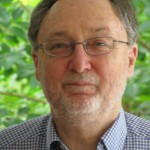 |
DAVID LARBALESTIER
NHMFL/FSU
David Larbalestier is a materials scientist who has spent his professional career developing, understanding, improving and using superconductors in practical wire forms. He gained his BS and PhD at the Imperial College, afterwards joining the Rutherford Laboratory, where he worked on the development of the first multifilamentary Nb3Sn conductors and magnets, one outcome of which was the first filamentary Nb3Sn NMR magnet made jointly with an Oxford Instrument Company team. He joined the University of Wisconsin in 1976, continuing to work on filamentary Nb3Sn and later the materials science and processing of still the most widely used superconductor, Niobium Titanium. On the discovery of HTS materials in 1987, he established programs in defect and grain boundary studies so as to understand better the differing roles of vortex pinning and grain boundary obstructions in controlling Jc. He became director of the Applied Superconductivity Center in 1991 and developed many industry, national laboratory and other university group collaborations that have been influential in developing HTS conductor and magnet technology. Joining the National High Magnetic Field Laboratory in 2006 with the mission of driving HTS materials into ultra-high field magnets, he has led efforts on HTS materials and magnets that have recently achieved fields of more than 40 T. Former students, post-doctoral workers and sabbatical visitors to ASC are widely dispersed in the superconductivity community in the US, Europe and Asia.
|
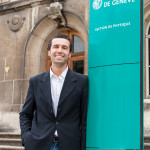 |
CARMINE SENATORE
Université de Genéve
Prof. Carmine Senatore was appointed head of the Group of Applied Superconductivity at the University of Geneva, Switzerland, in 2010. He received his MSc degree cum laude in Physics in 2000 and his doctoral degree in 2004 at the University of Salerno, Italy. His formation as solid state physicist was focused on the vortex dynamics in high-Tc superconductors. Presently, his primary activity is on superconducting materials for large-scale applications. The research of Prof. Senatore is driven by the challenge to understand and control the basic properties required for the practical implementation of superconductors. This includes all material aspects that play a role in tuning the superconductor properties as well as innovative approaches to the processing of superconducting wires and tapes. His activities focus on the development of both low- and high-Tc superconductors for applications in various fields, from the high field magnets for NMR/MRI systems and particle accelerators to the emerging applications in the electric power infrastructure. Recently, his group has developed and tested in collaboration with Bruker BioSpin a superconducting coil able to generate a magnetic field of 25 Tesla. Senatore also takes part in the CERN study for the next generation accelerator magnets in view of a 100 TeV energy-frontier hadron collider.
|
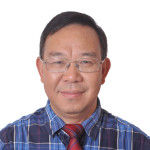 |
LIYE XIAO
Institute of Electrical Engineering (IEEE), Chinese Academy of Sciences (CAS)
Liye Xiao is a scientist who works on large-scale application of superconductivity. In 1990, he started the research of high Tc superconductor (HTS) in high field magnet, and then obtained his doctorate degree in 1995 at the Institute of Electrical Engineering (IEE), Chinese Academy of Sciences (CAS). During 1995 and 1998, as postdoctoral researcher, he visited National High Magnetic Field Laboratory in Tallahassee and High Magnetic Field Laboratory of National Institute for Material Sciences in Tsukuba, and took participation in the R&D projects of HTS superconducting coil for magnet of 1GHz NMR. In 1998, he was back to IEE-CAS and started the research of HTS for power application. Since that time, he has leaded some projects to develop the power cable, fault current limiter (FCL), transformer and SMES in China, and then a 75m, 3-phase 10.5kV/1.5kA power cable, a 3-phase 10.5kV/1.5kA FCL, a 3-phase 10.5kV/400V/630kVA power transformer and a 1MJ/500kVA HTS SMES were developed and demonstrated at live distribution systems; In 2011, a superconducting power substation with above superconducting power equipments had been built and operated for an industrial park in Baiyin City; In 2013, a 360m/10kA HTS superconducting DC power cable has been developed and demonstrated at an aluminum electrolyzing workshop. Now, Liye Xiao started the research of HTS for DC power grid and new energy. Since 1999, Liye Xiao has acted as the director of Applied Superconductivity Laboratory of IEE-CAS, and since 2007, he also became the director of IEE-CAS, and since 2010, he became the vice-chairman of China Electrotechnical Society.
|
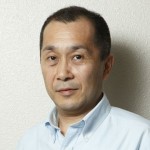 |
NOBUYUKI YOSHIKAWA
Yokohama National University
Nobuyuki Yoshikawa received the B.E., M.E., and Ph.D. degrees in electrical and computer engineering from Yokohama National University, Japan, in 1984, 1986, and 1989, respectively. Since 1989, he has been with the Department of Electrical and Computer Engineering, Yokohama National University, where he is currently a Professor. In 1996 he spent one year studying in the Cryoelectronics Group of University of California, Berkeley as a visiting researcher.
His research interests include superconductive devices and their application in digital and analog circuits. Up to now he has demonstrated high-speed operations of several large-scale superconducting circuits based on single-flux-quantum (SFQ) logic, which include SFQ microprocessors and floating-point units. He is also interested in single-electron-tunneling devices, quantum computing devices and cryo-CMOS devices.
He received the Superconductivity Science and Technology Award from the Forum of Superconductivity Science and Technology, Japan, in 2004, and the 146 Committee Award of the Japan Society for the Promotion of Science (JSPS) in 2000.
He is currently a Program Officer of the Research Center for Science Systems of the JSPS, and a chair of the Technical Group on Superconducting Electronics of the IEICE, Japan, and a chair of the Technical Committee on Metal and Ceramics of the IEE, Japan.
|
|